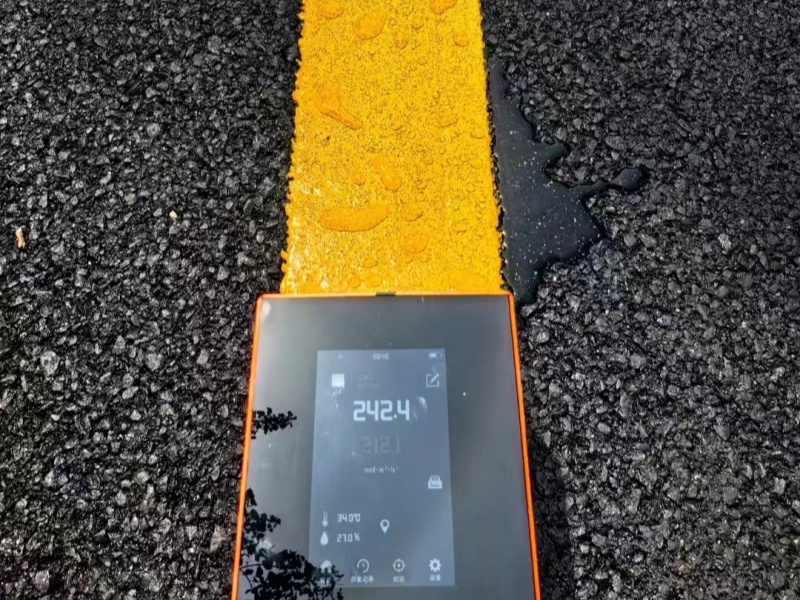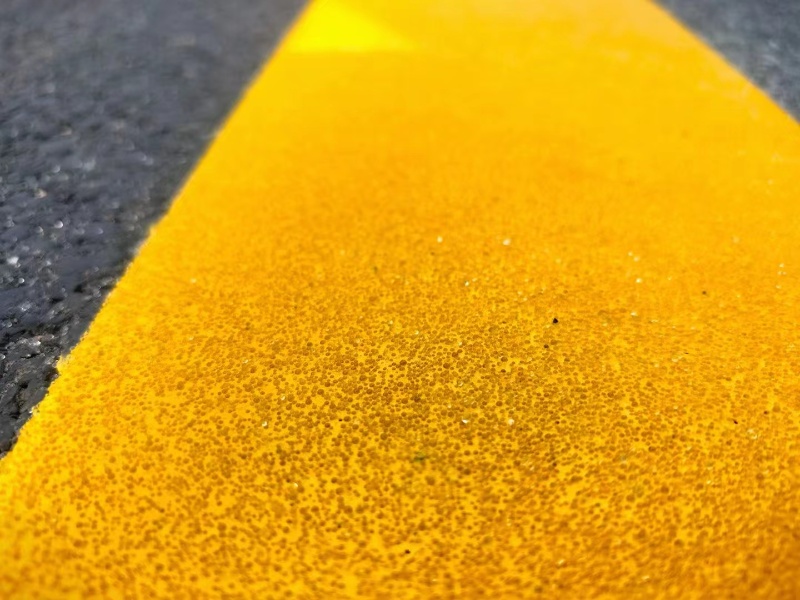One of the most common ways to enhance retro-reflectivity is by embedding glass beads into the paint used for road markings. These beads act as tiny reflectors, bouncing light back to its source, which improves visibility at night or during adverse weather conditions.
High-Quality Beads: Using premium, high-refractive-index glass beads can significantly improve reflectivity. Typically, these beads are between 200 and 600 microns in diameter, and they are evenly distributed over the marking surface.
Proper Embedding: The beads need to be properly embedded in the marking material. If they sit too deep, they won’t reflect light, and if they’re too shallow, they may get dislodged quickly due to traffic wear. Optimal bead coverage and embedment ensure long-term effectiveness.

The type of pigment used in yellow road markings affects both the color intensity and reflectivity. Using highly reflective pigments or adding special retro-reflective pigments can help boost reflectivity.
High-Brightness Pigments: These pigments offer better reflection properties and enhance visibility in both day and night conditions. The use of brighter yellow pigments ensures that even in the absence of retro-reflection (like during daylight), the markings remain clearly visible.
UV-Stable Pigments: Since road markings are exposed to harsh sunlight, it’s essential to use UV-stable pigments to prevent fading. A well-maintained bright yellow color ensures consistency in retro-reflectivity throughout the life of the marking.
Thermoplastic road markings have become increasingly popular due to their durability and enhanced retro-reflectivity. These markings are made from a mixture of resins, plasticizers, and pigments that are melted and applied to the road surface. Glass beads are mixed in or applied on top while the material is still hot.
Long-Term Reflectivity: Thermoplastics can hold glass beads more securely, allowing for sustained retro-reflectivity over time, even in areas with heavy traffic.
Better Adhesion: Thermoplastic markings adhere well to asphalt and concrete surfaces, creating a durable bond that resists wear and tear, which is vital for maintaining high retro-reflectivity in the long run.
The method of applying road markings plays a critical role in ensuring reflectivity.
Spraying vs. Extrusion: Extrusion methods, where the marking material is pushed onto the surface, allow for more controlled bead embedding and consistent thickness. This uniformity can lead to better overall retro-reflectivity compared to spraying methods.
Thicker Applications: Applying thicker layers of marking material allows for a greater number of beads to be embedded, which enhances reflectivity. However, care should be taken to maintain an appropriate thickness to prevent premature wear or peeling.
Over time, the retro-reflectivity of road markings will degrade due to weather, traffic, and other environmental factors. Regular monitoring and timely maintenance are essential to ensure that yellow road markings remain reflective and visible.
Periodic Reapplication: Depending on traffic volume and weather conditions, road markings should be reapplied periodically. Using high-quality materials and beads during reapplication can help restore lost reflectivity.
Automated Measurement: Some road agencies now use automated retro-reflectivity measurement systems to evaluate the condition of road markings. These systems help in assessing when the markings need maintenance, ensuring optimal performance.

Enhancing the retro-reflectivity of yellow road markings is critical for road safety, especially at night or in adverse weather conditions. By using high-quality glass beads, advanced pigments, durable thermoplastic materials, and improved application techniques, the effectiveness of road markings can be significantly improved. Regular maintenance ensures that these improvements are sustained over time, reducing accidents and enhancing overall road visibility.
Investing in better retro-reflective road markings not only enhances safety but also extends the life of the markings, making it a cost-effective solution for cities and transportation authorities.